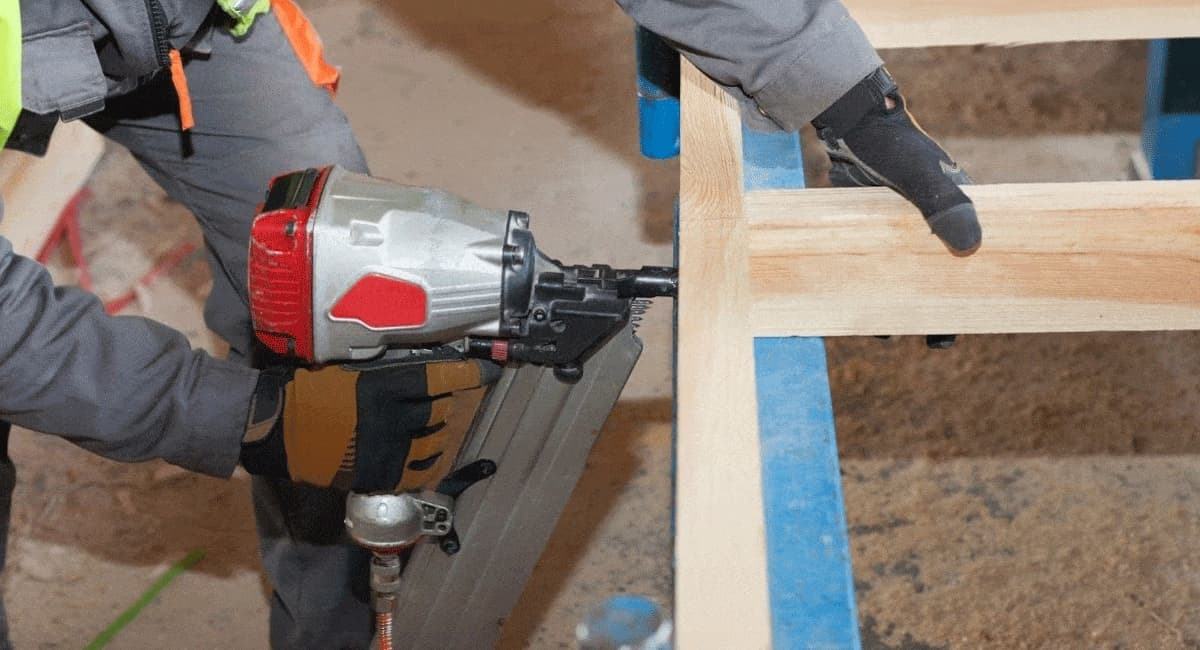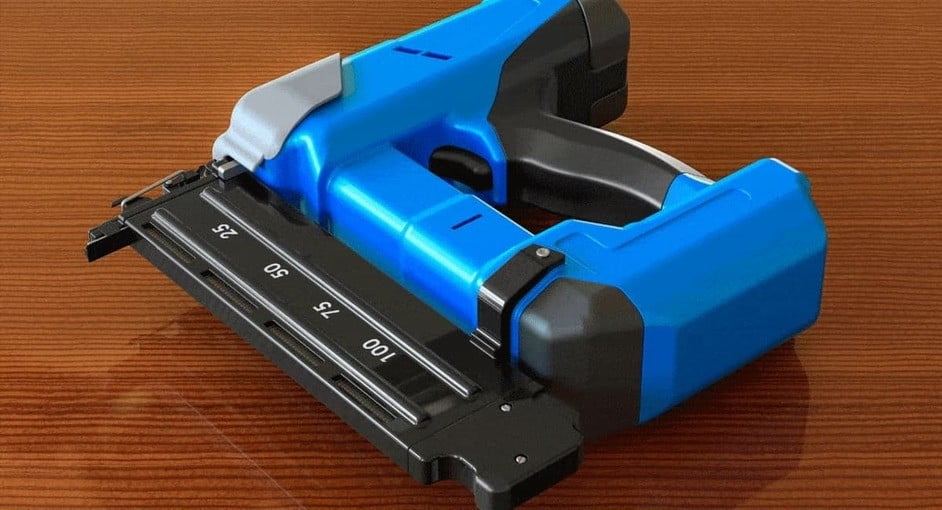The Difference Between Brad Nailer Vs Framing Nailer
The most famous nail guns are the brad nailers and the framing nailers. Even though they both look like a typical nail gun and can be used in similar projects, there are a couple of things that differentiate them.
Choosing the right type of nailer for your project can be a hard task. If you’re not too sure about which applications should the nail guns perform, this article will explain everything there is to know about both tools.
What Is a Framing Nailer?
If you’re working on large-scale construction, then a framing nailer is what you need for tasks that involve inserting big nails into hard materials. Professionals use frame nailers on jobs related to construction. You need a framing nailer to construct a house from scratch or to extend a room in a home that’s already been built.
A framing nailer is also useful in other construction jobs, such as the building of a deck. A framing nailer is great for fastening plaster without shattering, it offers proper strength to connect fences, and it typically ranges to 3-1/2 inches long.
What Is a Brad Nailer?
A brad nailer is one of the most common air-powered tools you will find at a woodworking shop. With the help of a brad nailer, you can put wire brands into different types of wood without creating a huge hole. Most brands have tiny heads and they are 2 inches in length. The tiny head allows them to go over the surface of the board.
A nail with a small diameter can prevent fractured wood while you’re nailing. For a more precise result, you might want to apply the brad nailer. Nails with smaller diameters aren’t sufficient enough to support a big load, so you need to keep in mind that they’re only fit for thin wood boards.
Brad Nailer Vs Framing Nailer: A Detailed Comparison
In this section, we will go over the differences between brad nailers and framing nailers.
Applications
Brad nailers are mostly used for lighter tasks such as assembling furniture. Framing nailers are used for tougher jobs such as thick wood or other hard projects. When you have extensive work such as driving larger nails into the material, framing nailers are a better choice.

Brad guns are more fit for plywood or other delicate materials.
Some applications of a framing nailer include the following:
Brad nailers are meant for the following applications:
Power Source
Brad nailers can be used with different power sources such as pneumatic or cordless. On the other hand, framing nailers are typically used with air compressors since they are best to drive more than one nail at a time.
Safety
There are safety concerns with both framing and brand nailers since you are working with a tool.
Any tool can be dangerous if it’s not handled correctly, and this is particularly true for power tools. Even though nail guns aren’t meant to fire unless you press their pressure tip, you can accidentally trigger it by tapping it against something, so you always need to be careful.
A brad nailer can get lost in the material you’re working with due to its small head. On the other hand, you will clearly see where you left your framing nailer after you’re done working with it.
Performance
As we mentioned, you can’t use a brad nailer for larger projects, even though it’s fairly easy to work with. If you’re looking for precision in your work, a framing nailer is the tool you need.
Ease of Use
Because it’s lightweight, a brad nailer is a lot easier to handle. It’s a great choice for crown molding and smaller jobs. You can also use brad nailers with something that requires a lot of nail driving and repetitive work. Contrarily, a framing nailer will wear you down quickly because of its weight and bulk, so it’s harder to use.
Nail Size
The size of trim components should help you determine nail sizes. Inflexible joints are better held by framing nail guns since they have a large head, unlike brad nailers that come with a smaller head. For this reason, brad nailers are a lot more useful for lighter jobs, but they can’t handle a lot of heavy work.
Additional Equipment
You can use framing nailers with plenty of additional accessories so they are suited for various projects. Contrarily, brad nailers aren’t compatible with optional equipment.
Affordability
Since brad nailers have fewer parts and smaller head sizes, they are cheaper than framing nails. Besides the bigger head of framing nails, something that adds to their cost is that they use air compressors as a power source.
Maintenance
Both framing nailers and brad nailers need the same level of maintenance. One thing that might make the maintenance of the brad nailer easier than a framing nailer is a fact that it comes with fewer parts.
Because the framing nailer comes with more parts and its head is large, you might spend a bit more time maintaining it.
Environment
Brad nailers produce more shavings due to their smaller heads, so if you’re working in a dirty environment framing nailers might be a better choice for you. Plus, your project will look neater because framing nailers leave fewer marks.
Types
Brad nailers are available in two basic types: pneumatic brad nailers and cordless brad nailers.
Cordless brad nailers generate nailing power through lithium-ion batteries. On the other hand, pneumatic brad nailers operate by using an air compressor and require a long hose to move the compressed air from the tool to the nail gun.
Brad nailers are usually used by homeowners who don’t have an air compressor. People tend to pick the cordless version due to the increased portability and the fact that they don’t have to buy an air compressor. Pneumatic nailers provide a smooth operation and are a lot faster. Make sure you take all of this into account when picking your nailer.
Both cordless framing nailers and pneumatic framing nailers come in angled, straight, and coil magazine setups. Just like brad nailers, pneumatic framing nailers use an air compressor to operate. With a pneumatic nailer, a piston is forced into the wood with the help of air.
A battery-powered framing nailer works in the same way that a pneumatic nailer does, but the power comes from a compressed air canister that can be found inside the nailer.
Benefits of Brad Nailers and Framing Nailers
The benefits of brad nailers include the following:
The benefits of framing nailers include the following:
Conclusion
Brad nailers and framing nailers both have specific features, so the project you’re working on will determine the type of nailer you need.
Framing nailers drive nails into more solid woods like hardboard paneling, hardwoods, or oak, and there are plenty of models and sizes for different purposes. On the other hand, brand nailers are used to doing detailed work on items, and you don’t need a framing nailer for it.
We hope that the information we provided in our article regarding their pros and cons will help you choose the right type of nailer for your project. Make sure that you pick the right fit because using the wrong nailer will not only damage your project but your tool as well.
Last Updated on April 30, 2022 by Tom Bradly

